Ka’kitsímo – Mentha arvensis L.
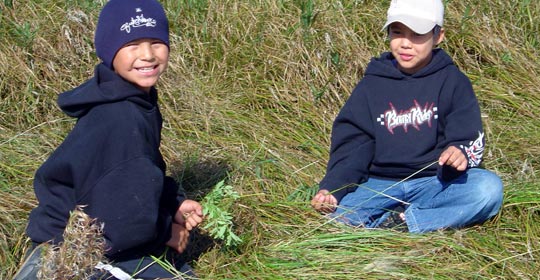
Japheth and Shelby collecting Mint in the wet prairie.
Wild Mint
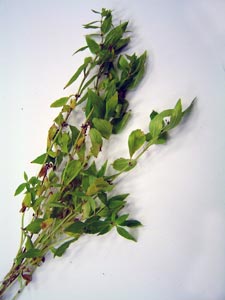
Mentha arvensis L.
Galileo Educational Network
A healing tea of mint can be made for upset stomachs and sore throats. Our elders used it for heart troubles.
Mint works great at keeping away bugs and small animals because it has a strong smell. Our elders packed mint with food and in parfleshes for that reason. Our elders also disguised the smell of things from animals, like traps, by rubbing mint on them.
You can also use mint to flavor meat and stews. Of course, a fresh mint leaf straight from the earth popped into your mouth is a great treat all on its own.
Mint grows with sweetgrass where we live. Look for it in moist areas, like coulees and swampy areas. Mint can grow up from 10-45 cm tall. It has toothed, rough, bright green leaves that grow opposite to one another all the way up the stem. The flowers are bluish and are only 3 mm long. They bloom in whorls around the leaves in July and August. You often smell a mint plant before you see it.
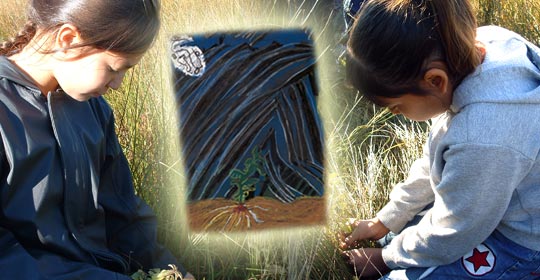
Laney and Sommer harvesting Wild Mint. A pastel drawing by Marvin.
Menthe des champs
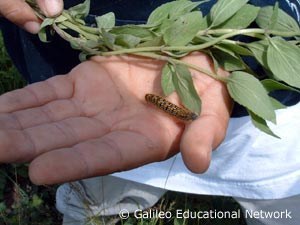
Mentha arvensis L.
Galileo Educational Network
Le thé à la menthe peut soulager les troubles d’estomac et les maux de gorge. Nos aînés s’en servaient aussi pour les troubles cardiaques.
La menthe sert aussi à éloigner les insectes et les petits animaux en raison de sa forte odeur. Nos aînés mettaient de la menthe avec les aliments entreposés et dans leurs parflèches pour cette même raison. Ils déguisaient aussi l’odeur de certaines choses, comme les pièges, en frottant de la menthe dessus pour attirer les animaux.
La menthe peut aussi servir à assaisonner la viande et les ragoûts. Et sans aucun doute, une feuille de menthe fraîchement cueillie est un vrai délice.
La menthe pousse là où vit le foin d’odeur, c’est-à-dire dans les régions humides comme les coulées et les marécages. La menthe peut mesurer de 10 à 45 centimètres. Ses feuilles dentelées et rugueuses sont d’un vert vif. Elles poussent côte à côte tout le long de la tige du plant. Cette plante donne des fleurs bleuâtres qui ne mesurent que 3 millimètres de long. Elles poussent comme des tourbillons autour des feuilles, en juillet et en août. Souvent, il est possible de sentir un plant de menthe avant même de le voir.
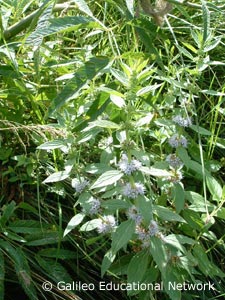
Mentha arvensis L.
Galileo Educational Network
- Glenbow Museum. (2005). Natsitapiisinni Exhibit Calgary, Alberta: Blackfoot Gallery Committee.
- Kerik, Joan. (1979). Living With The Land: Use of Plants by the Native People Of Alberta. Edmonton, Alberta: Provincial Museum of Alberta.
- Vance, F.R., Jowsley, J.R. & Mclean, J.S. (1984). Wildflowers Across The Prairies. Saskatoon, Saskatchewan: Western Producer Prairie Books.





